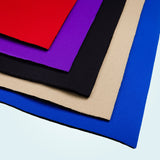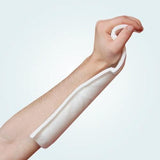This guide is useful to understand the difference between casting and splinting. It is important to highlight that every patient is different and people with the same injury could react differently to casting and splinting materials. If you want more information about any of our products contact us today!
Splinting is a method of keeping a body part from moving in order to allow it to heal better. This technique is used for different purposes, as prevention of neurovascular injuries, temporary immobilisation of sprains, fractures, and reduced dislocations. It could also be used to control the pain.
You may be asking yourself now…what’s the difference between casting and splinting?
The initial approach to casting and splinting requires a comprehensive assessment of the injured extremity for proper diagnosis. Once the need for immobilisation is determined, whether to apply splint or a cast would depend on the stage and severity of the injury, the potential for instability, the risk of complications, and the patient's functional requirements would be considered.
The main difference between both is that Splinting is generally used as a temporary treatment for fracture management, simple or stable fractures, sprains, tendon injuries, and other soft-tissue injuries and casting is often used for definitive and/or complex fracture management post splint.
When are casts and splints used?
Casts and splints are used when a bone is broken or following orthopaedic surgery. Sometimes splints are used immediately following an injury due to inflammation of the affected area. After the inflammation goes down, then a full cast may be applied.
During the healing process the injured area could become less swollen and the cast gets looser. In this case and depending on the severity of the indication, the cast might be replaced with a splint to provide more freedom of movement.
Benefits of splinting
- Splints are faster and easier to apply
- They are static or dynamic
- As It’s no circumferential it allows for the natural swelling
- Preferred method of immobilization in the acute care setting, avoid pressure related complications.
- Easier to remove allowing for regular inspection of the injury site.
- More effective immobilisation
- Will provide three point fixation of the limb
Benefits of thermoplastic and splinting
Our ranges of low temperature thermoplastic splinting materials meet the needs of both the therapist and the patient. Thermoplastics can be used to make splints that are lighter and easily fit the body of the patient... they can also be removed for cleaning and bathing.
We have a wide range of tools used by medical specialist to aid with applying or removing splints and cast. All items have been designed with safety and convenience in mind for you and the patient.







